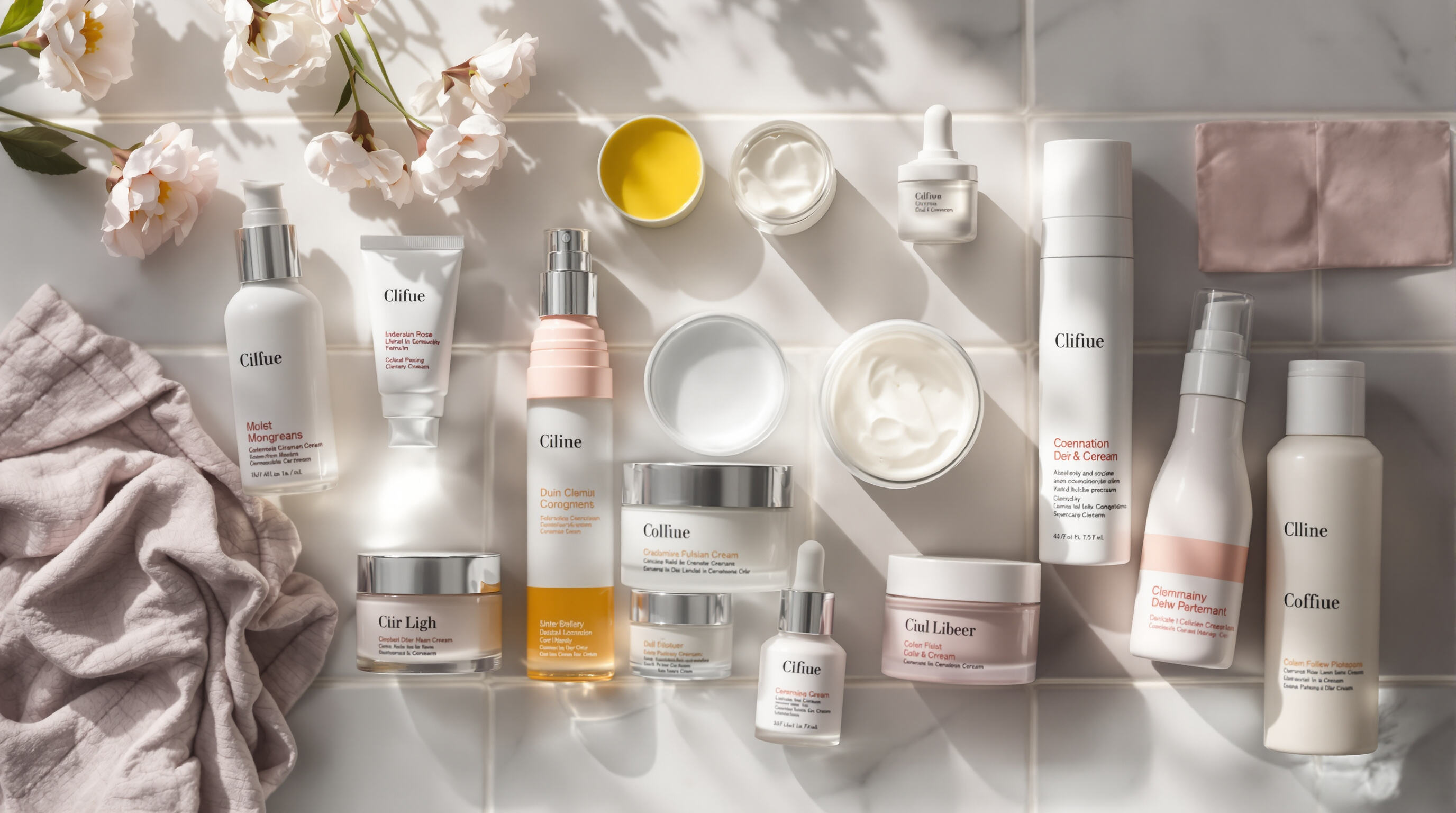The Science of Skin Aging: What Causes Fine Lines and Wrinkles
Intrinsic vs. extrinsic aging: Understanding the biology of fine lines
There are basically two ways our skin ages over time. The first one happens naturally as part of life's clockwork. Our skin gets thinner, cells take longer to replace themselves, all because collagen production drops off quite a bit around age 50, maybe about 30 percent less than when we were younger. Then there's what happens from outside factors, and this actually causes most of the visible signs we see on faces. Sun damage stands out as the big culprit here since those harmful UV rays create free radicals that literally chew away at skin proteins. And don't forget about smoking or living in polluted areas either they really speed things up, making wrinkles appear four times faster than just regular old aging would do on its own.
Collagen decline and its impact on skin elasticity with age
The body's collagen levels start dropping around age 30 at roughly 1 to 1.5 percent each year. As this happens, the skin's supportive structure gets weaker over time, and research suggests most people notice their skin loses somewhere between 20 and 40 percent of its bounce back ability in just ten years. Sun exposure really speeds things up though. When skin is hit with UV rays, certain enzymes get activated that break down collagen at about five times the normal rate we see from just getting older naturally.
Oxidative stress, UV damage, and their role in accelerating antiaging concerns
Research published in the Journal of Nanobiotechnology back in 2025 showed something pretty startling about UV exposure. When skin is exposed to sunlight, it produces around five times more reactive oxygen species, or ROS for short, compared to areas that stay protected from the sun. What happens next isn't good for our skin at all. These ROS molecules start attacking DNA structures, mess with collagen production which keeps skin firm, and kick off those annoying inflammatory responses in the body. That combination of problems basically explains why most people get those early signs of aging when they don't protect themselves properly from the sun's rays. And things get worse as we get older because our body's natural antioxidant defenses just don't work as well anymore. This means older skin becomes even more susceptible to this kind of damage over time, leading to all sorts of visible signs of aging.
Top Clinically Proven Ingredients in Anti-Aging Skincare

Retinol for Wrinkles: Boosting Collagen and Cell Turnover Safely
Retinol remains the gold standard for reducing wrinkles, stimulating up to 80% of collagen production in treated areas according to a 2023 Journal of Cosmetic Dermatology study. This vitamin A derivative accelerates cellular renewal without the irritation of stronger retinoids, making it ideal for long-term antiaging regimens when used 2–3 nights weekly.
Vitamin C for Fine Lines and Sun Damage: Antioxidant Protection and Brightening Benefits
Topical vitamin C neutralizes free radicals from UV exposure while brightening sun-induced hyperpigmentation. Its dual action repairs existing fine lines and prevents new ones by boosting collagen synthesis by 34% in controlled trials.
Niacinamide: Strengthening the Skin Barrier and Reducing Discoloration
This vitamin B3 variant increases ceramide production by 48% (2024 Skin Pharmacology meta-analysis), fortifying the moisture barrier against environmental aging factors. Its gentle formulation reduces age spots and redness, complementing stronger actives like retinol in daytime routines.
Bakuchiol and Emerging Actives Like Tranexamic Acid for Gentle, Effective Antiaging
Plant-derived bakuchiol mirrors retinol’s collagen-boosting effects with 63% less irritation, while tranexamic acid targets melanin pathways to fade stubborn discoloration. These alternatives expand options for sensitive or mature skin needing multifaceted antiaging solutions.
How to Build an Effective Anti-Aging Skincare Routine
Morning Routine: Layering Vitamin C and SPF to Prevent Fine Lines
Kick off any good skincare morning routine with some vitamin C serum first thing. The stuff works wonders because those antioxidants fight off all those pesky free radicals from sun damage and city smog, plus it helps give skin that nice even glow. After applying the serum, don't forget to slap on some broad spectrum SPF 30 or higher sunscreen. According to what dermatologists are saying these days in their 2024 guidelines, people who wear sunscreen regularly see about a 24% reduction in wrinkles after just two years compared to folks who skip protection altogether. Look for lightweight formulas labeled non-comedogenic so everything gets absorbed properly without leaving behind that annoying pill effect where products clump together instead of blending smoothly into skin.
Night Routine: Maximizing Retinol or Bakuchiol for Wrinkle Reduction
The evening skincare routine really needs to get collagen going for best results. Retinol, which is basically vitamin A, works wonders by speeding up how fast our skin cells renew themselves and fixing damage from UV exposure. Some folks find it irritating though. There are newer options now like bakuchiol that do almost the same job without all the redness and peeling. When applying these active ingredients, wait until after cleaning face and apply them while skin is still slightly damp, not completely dry. Start slow with maybe once or twice a week at first so skin can adjust. And don't forget something with ceramides afterwards to keep things from getting too parched. Most people notice their skin feels better overall when they balance out those powerful actives with proper hydration.
Combining Antiaging Ingredients Safely: Synergy Without Irritation
Don't try to pack too many strong ingredients into one skincare routine. Take retinol and vitamin C as an example these two really don't play well together. Some folks find better results when they use retinol at night and vitamin C in the morning rather than mixing them up. According to research published last year, adding niacinamide alongside retinol actually cuts down on redness by around 40 percent and helps skin stay hydrated longer. Before jumping into any new combo, give yourself three full days to test it out somewhere discreet first. And remember, it's smarter to bring in just one新产品 at a time so you know exactly what works and what doesn't mess with your skin.
Why Sun Protection Is Non-Negotiable in Any Anti-Aging Strategy
Sun protection forms the cornerstone of any effective antiaging strategy, as UV radiation accelerates collagen degradation and compromises skin’s repair mechanisms.
Daily UV Exposure and Its Direct Link to Premature Fine Lines and Wrinkles
UVA rays penetrate deeper skin layers, breaking down collagen and elastin fibers responsible for maintaining structural integrity. This damage accumulates over time, leading to permanent creases and uneven texture. UVB rays exacerbate surface-level harm, causing oxidative stress that weakens the skin barrier and triggers hyperpigmentation.
Integrating Broad-Spectrum SPF Into Every Antiaging Regimen for Lasting Results
Most skin doctors recommend applying a broad spectrum SPF 30 or higher sunscreen each day as part of morning routine. These products work against both types of harmful UV radiation. When combined with antioxidant treatments, they form what many call a double barrier effect. The antioxidants help fight off those pesky free radicals that damage skin cells, while also working to slow down visible signs of aging from sun damage. For best results, folks should remember to put on more sunscreen roughly every couple of hours when spending time outdoors. This helps keep the protective layer intact throughout the day. Regular reapplication not only maintains defense against UVâ…ä¸ but also supports healthy collagen levels and reduces risks associated with genetic changes in skin cells that can lead to early wrinkles and other aging concerns.
FAQ
What factors contribute to skin aging?
Both intrinsic (natural) factors like reduced collagen production and extrinsic (external) factors such as sun damage, pollution, and smoking contribute to skin aging.
At what age does collagen start to decline?
Collagen levels start to drop around the age of 30, decreasing roughly 1 to 1.5 percent each year.
Why is sun protection important in anti-aging skincare?
Sun protection is crucial as UV rays accelerate collagen degradation and oxidative damage, leading to premature fine lines and wrinkles.
How can I safely combine anti-aging skincare ingredients?
It’s best to use different active ingredients at different times, such as retinol at night and vitamin C in the morning. Introduce new products one at a time to test skin reactions.
Table of Contents
- The Science of Skin Aging: What Causes Fine Lines and Wrinkles
-
Top Clinically Proven Ingredients in Anti-Aging Skincare
- Retinol for Wrinkles: Boosting Collagen and Cell Turnover Safely
- Vitamin C for Fine Lines and Sun Damage: Antioxidant Protection and Brightening Benefits
- Niacinamide: Strengthening the Skin Barrier and Reducing Discoloration
- Bakuchiol and Emerging Actives Like Tranexamic Acid for Gentle, Effective Antiaging
- How to Build an Effective Anti-Aging Skincare Routine
- Why Sun Protection Is Non-Negotiable in Any Anti-Aging Strategy
- FAQ

